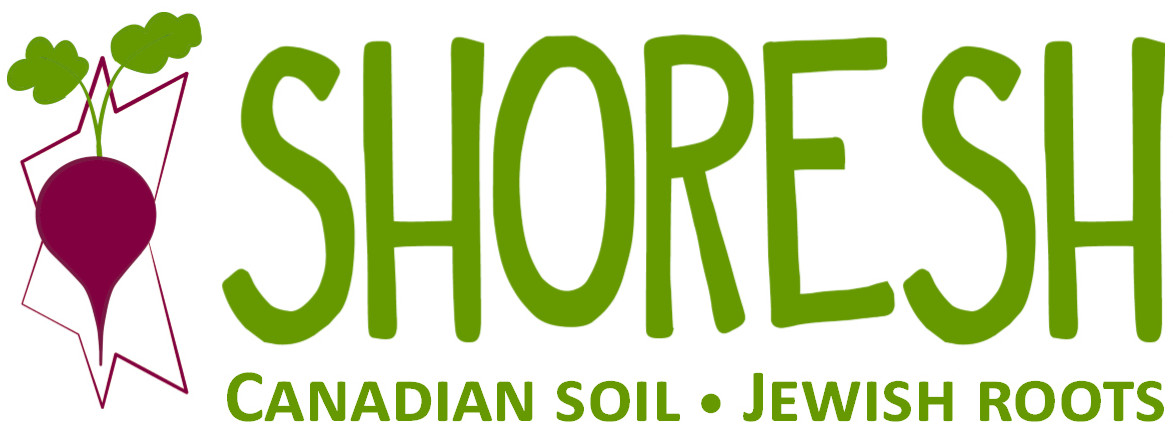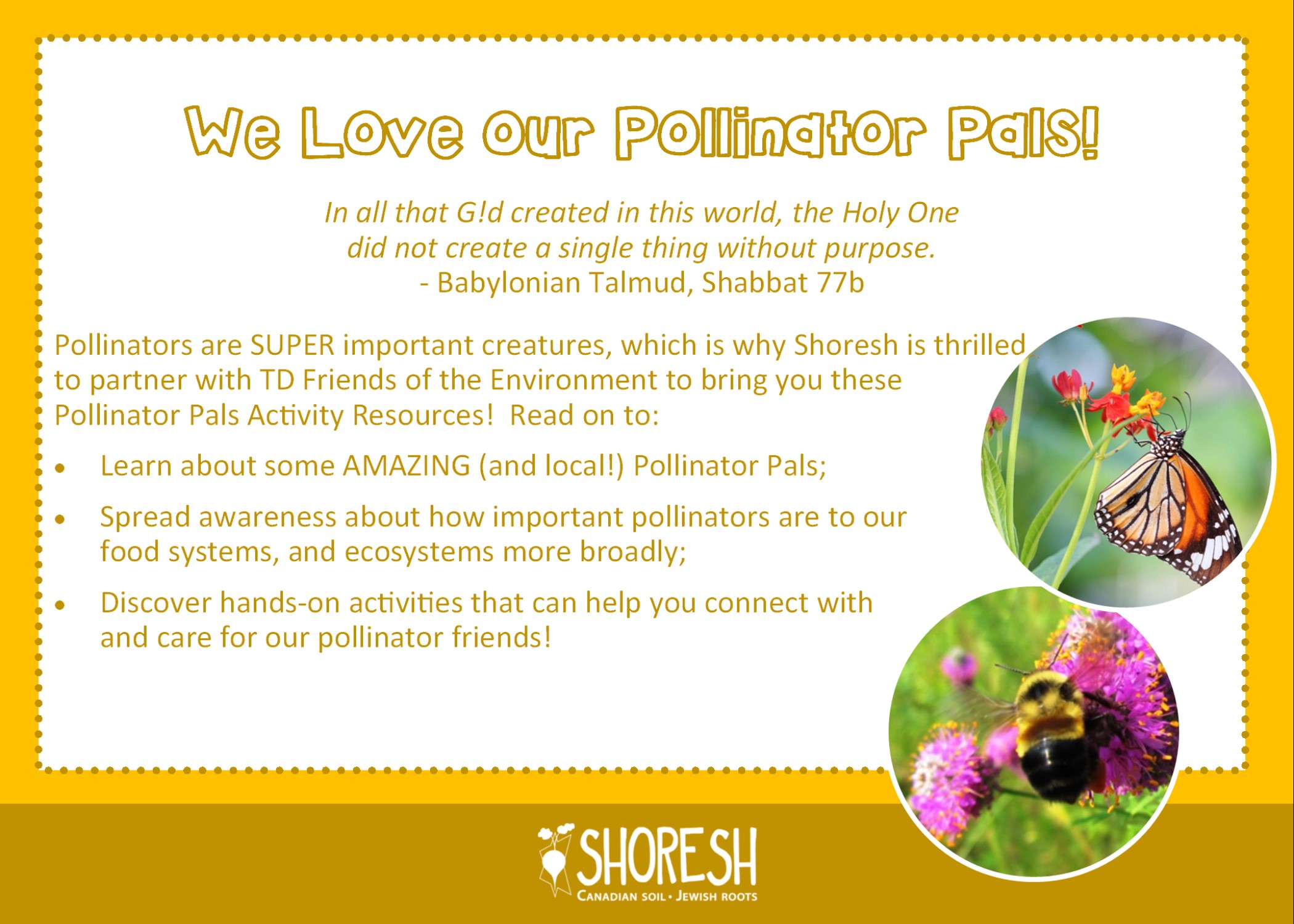
In all that G!d created in this world, the Holy One did not create a single thing without purpose.
– Babylonian Talmud, Shabbat 77b
Who are pollinators?
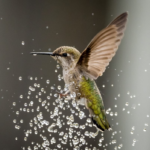
ruby-throated hummingbird in flight
Pollinators are creatures, such as bees, butterflies, birds, and bats, that move pollen from the anther (male part) of a flower to the stigma (female part) of a flower. This process, called pollination, fertilizes the flower. Once a flower is fertilized, it can produce fruit and seeds!
Why are pollinators important?
Between 75%-95% of all flowering plants need help with pollination—they need pollinators! Over 180,000 plant species (including 1,200 food crops) depend upon our pollinator pals.
In fact, 1 out of every 3 bites of food we eat is thanks to a pollinator’s work! Not only do pollinators provide food for humans, they also support healthy ecosystems that clean the air, stabilize soils, protect from severe weather, and support other wildlife.
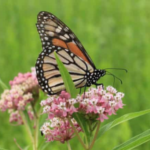
adult monarch butterfly on milkweed
How can we protect our pollinators?
We can help take care of our pollinator pals by spreading awareness about the importance of pollinators, creating pollinator habitat, and supporting farmers who use organic growing practices and plant for pollinators on their farms!
What do pollinators need to survive?
Pollinators, like all creatures, need three things to survive—food, water, and shelter. An area that has an abundance of these three things is considered an ideal pollinator habitat!
*Food Many insect pollinators eat just the nectar from flowers. Nectar is a sweet liquid produced by flowers for the purpose of attracting pollinators. Each insect must visit many flowers a day to eat its fill of nectar, and will brush up against the pollen of the flower while feeding, thereby aiding pollination. Bees are one of the few insects that eat both the nectar and the pollen itself. They carry pollen back to their hives or nests and mix it with their own honey (made with flower nectar) to create a food called “bee bread“. Even though bees collect pollen for themselves, enough of it remains behind to pollinate the flowers.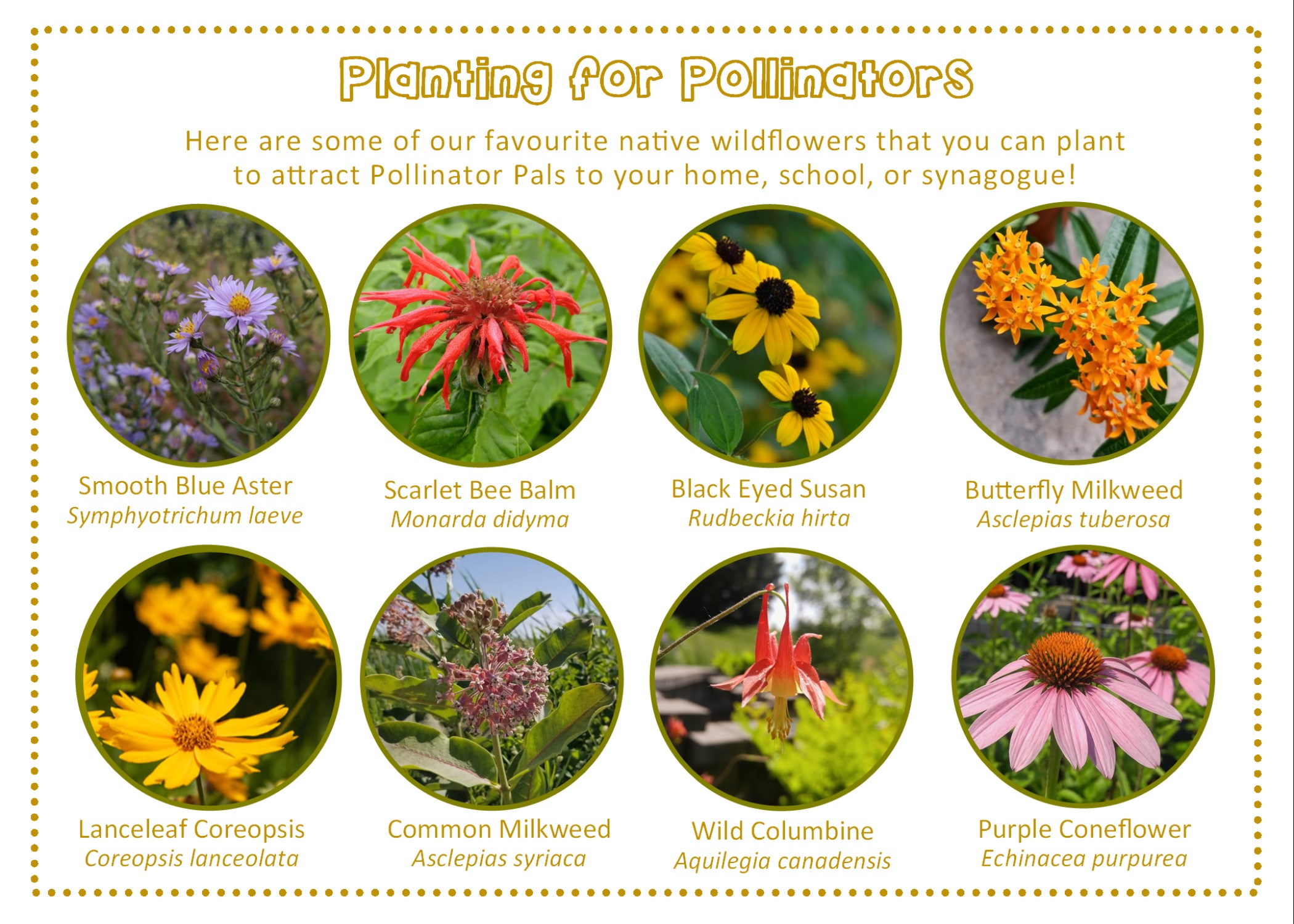
*Water Just like all creatures, pollinators need fresh, clean water to live. An ideal water source for a pollinator is one that is still or slow-moving, and has a place for the pollinator to land (such as a rock, leaf, or log) so that it will not be at risk of drowning while drinking.
*Shelter Pollinators nest in different ways. Some are social insects and require large trees or fallen logs in which they can build their communal hives. Others are solitary and need only a small hole in the ground or even just a hollowed-out sunflower stalk. Regardless of their size, all pollinators try to nest where their eggs and young will not be disturbed.
Go to PAGE 2 to read about Toronto’s official bee and how you can support them!
